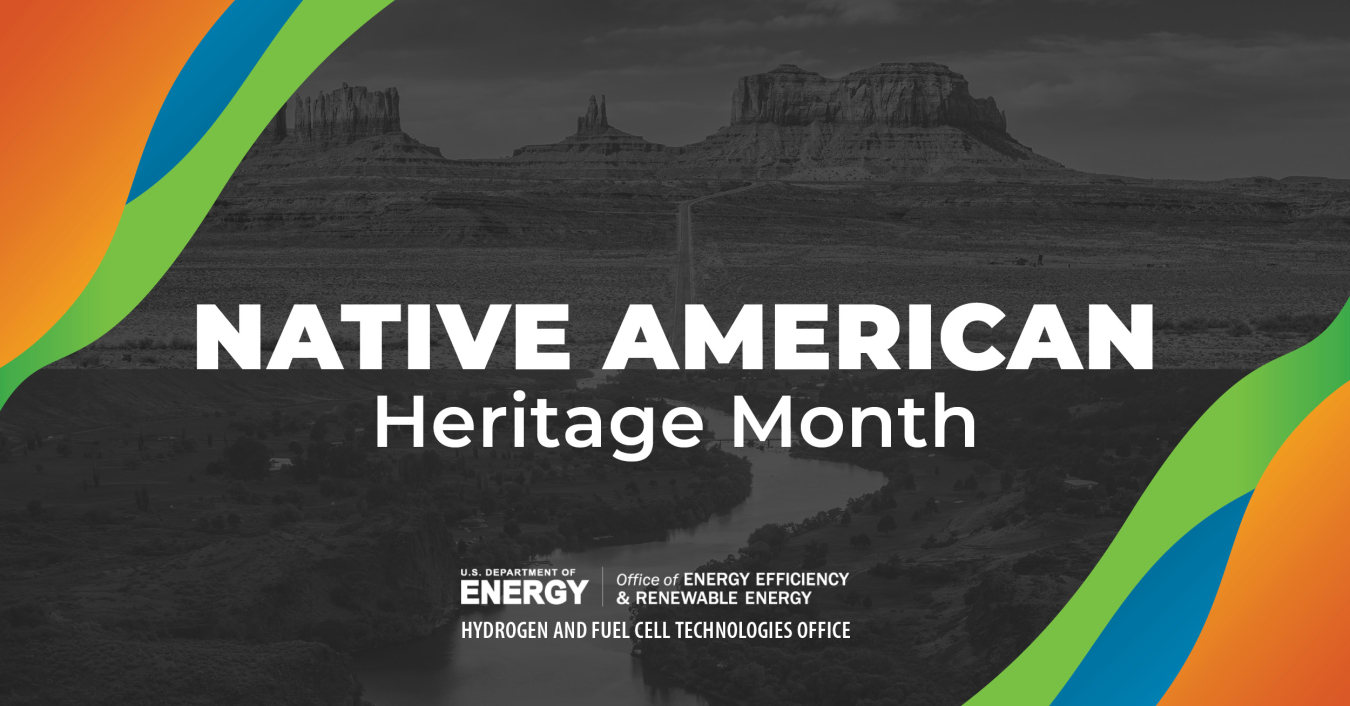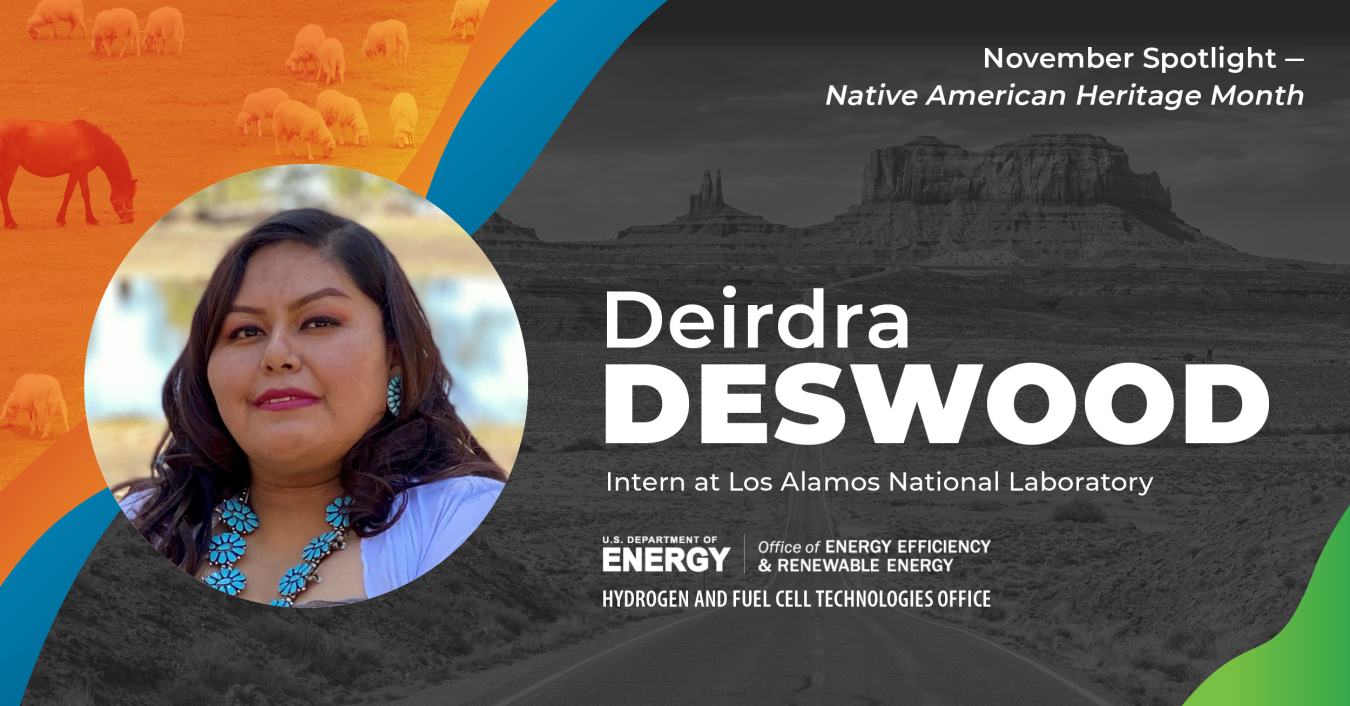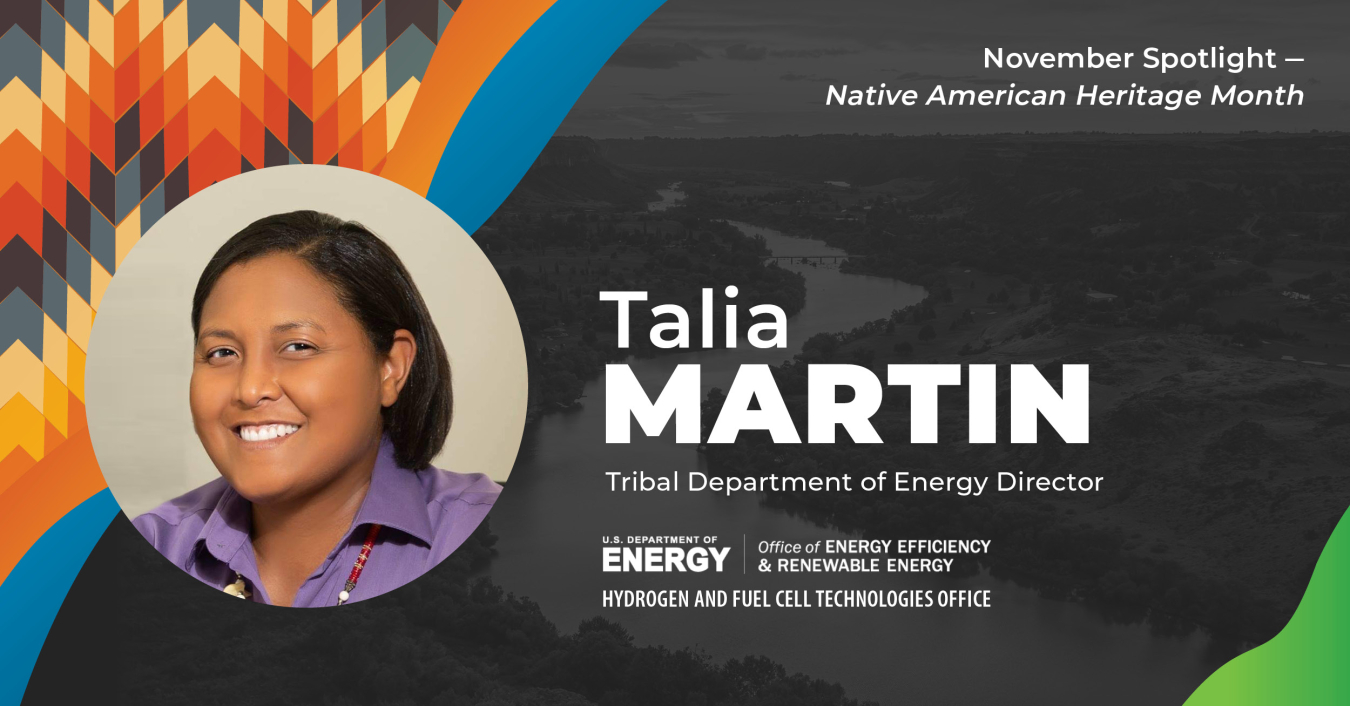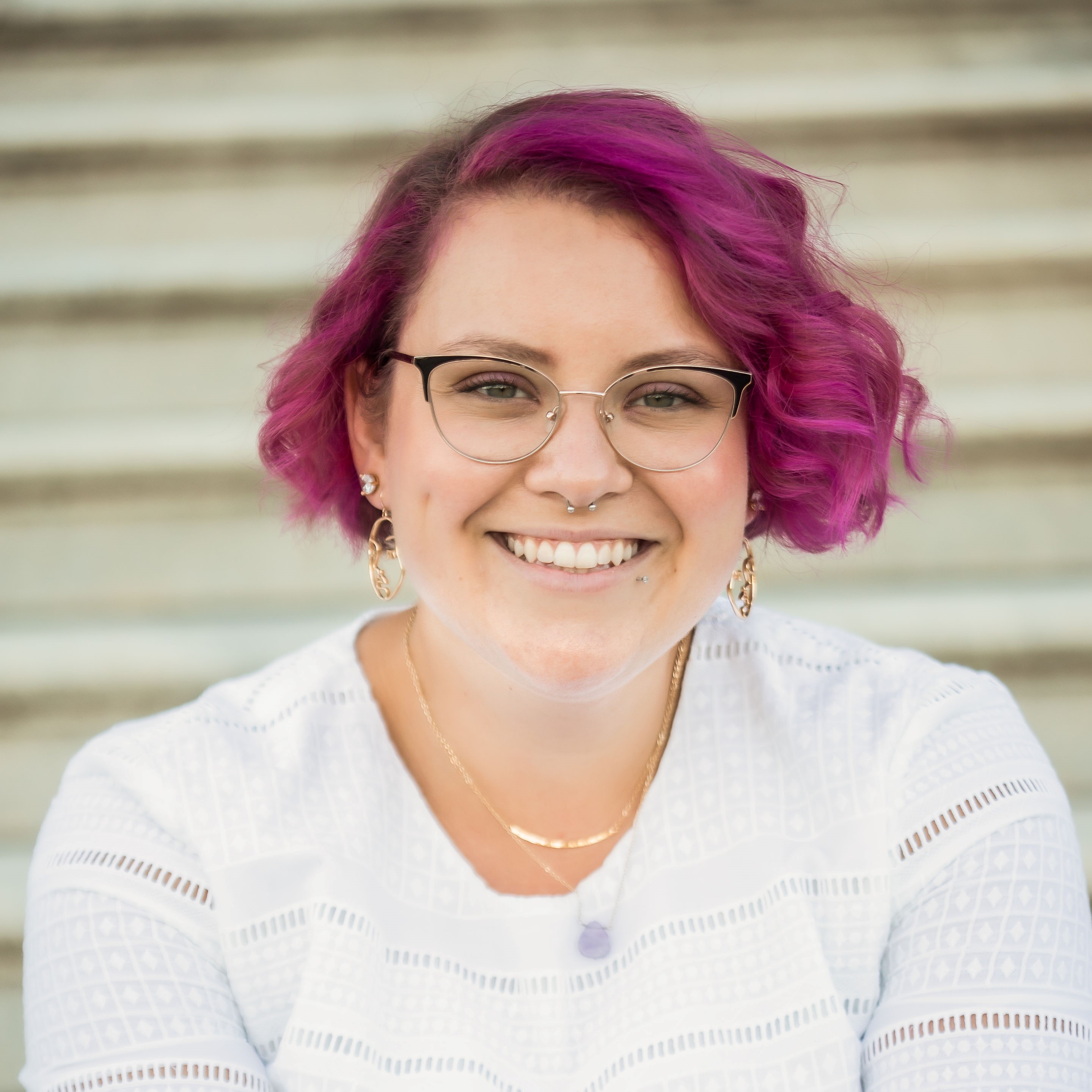This November, the U.S. Department of Energy Hydrogen and Fuel Cell Technologies Office celebrates Native American Heritage Month by spotlighting two important individuals who work tirelessly in the energy sector for the benefit of their communities.
Hydrogen and Fuel Cell Technologies Office
November 28, 2022
Each November, the U.S. Department of Energy (DOE) celebrates Native American Heritage Month. This year, DOE's Hydrogen and Fuel Cell Technologies Office celebrates Native American Heritage Month by spotlighting two important individuals who work tirelessly in the energy sector for the benefit of their communities.
Deirdra Deswood is a student at Navajo Technical University and an intern at Los Alamos National Laboratory working on research and development for manufacturing fuel cell components. Talia Martin is the Tribal Department of Energy Director for the Shoshone-Bannock Tribes. Her work helps ensure energy resources are safe for both the community and tribal lands.

Deirdra Deswood
As a current student at Navajo Technical University, a former intern for NASA, and now an intern at Los Alamos National Laboratory (LANL), Deirdra Deswood's hands-on experience has put her on a path to a successful career in hydrogen and fuel cell technologies.
Deirdra grew up in a small Navajo reservation community in Round Rock, Arizona, where she learned much of what drives her today. "My mom had to work, so I spent most of my time with my grandmother, and I picked up our language and embraced our culture and traditions," Deidra said. "She also taught me to stay in school and read my books, and I really stuck to that growing up."
Education on the reservation continued those traditions. "The school system is different from public schools—the mornings were for learning our language and afternoons were for Western education. That's how I grew up, and that's how I was also able to embrace my language. Growing up, I also spent a lot of time herding sheep." Deirdra credits her upbringing with the respect and appreciation she learned for the land and animals around her.
Her education and career path took many turns. "I always thought about growing up to become a teacher. I remember playing teacher with my siblings, but when I got to college, I didn't know what I wanted to do. I went into pre-professional nursing since my mom works at the nursing home and I thought that would be a good way to help my people." After finishing her certificate in pre-professional nursing, Deirdra took a detour to public administration before her love and curiosity for computers spurred her to earn a bachelor's degree in information technology from Navajo Tech.
Navajo Tech has also given her the opportunity to engage with her peers by running for vice president and president in her student senate, starting a club at school for native women in tech, and joining school activities like the American Indian Higher Education Consortium.
Deirdra's undergraduate program and curiosity continued to catapult her forward. While guiding a campus tour, she saw the school's fabrication lab for the first time. "I thought, 'One day I would like to work in a place like this with a lot of cool toys,' and so I began a bachelor's program in industrial engineering and mechanical engineering, and an associate's in mathematics. It's a lot, but I dove in headfirst and I absolutely love what I do now."
That love of education and passion for the environment can be seen throughout her internship at LANL, which has helped Deirdra learn critical professional skills while honing her curiosity for creative solutions. She is currently working on a project focused on research and development for manufacturing fuel cell components that are more efficient, light weight, and durable, and Deirdra sees opportunities to make fuel cells more environmentally friendly.
As the first person in her family to earn a college degree, Deirdra sees her work as a way of motivating and inspiring her community and her younger family members. "I'm really pushing the limits and setting milestones for my family—even for my nieces and nephews."
"When I was working for NASA, one day my niece came up to me and said 'auntie, we had a show-and-tell at school today. Remember the NASA sticker that you gave me? I told them that my auntie works for NASA and one day I want to work for NASA just like her.' It was really sweet, and I cried because I never thought I would be in a position where little kids would be saying, 'I want to be just like her.' I'm just a normal, native girl just trying to make it in the world and have a career to support myself and my family. My goal is to show my family that being educated and taking these opportunities is a way to self-sustain and help our family thrive in this ever-changing world."

Talia Martin
Director of the Tribal Department of Energy for the Shoshone-Bannock Tribes, Talia Martin grew up on the Fort Hall Indian Reservation in Idaho with her mother and five siblings, who are all enrolled members of the Shoshone-Bannock tribe.
Talia attended school both on and off the reservation before attending Haskell Indian Nations University, where she received an associate's degree in natural sciences. She transferred to the University of Kansas, where she earned a bachelor's in chemistry and a master's in pharmaceutical chemistry. "My path and passion were in chemistry, and I thought I was going to go into research, but that was not the case. For personal reasons, I eventually came back to the reservation, where I was employed by the tribes as an environmental scientist in 2011."
As Director of the Tribal Department of Energy for the Shoshone-Bannock Tribe, Talia has worked closely for the past six years with the Fort Hall Business Council—the governing body of the Fort Hall Reservation—to monitor energy issues for her community. Talia's office also coordinates with other tribal departments and function as a liaison between them and Idaho National Laboratory (INL), ensuring collaboration. "One of the main purposes of our department is overseeing activities that might affect the tribes' interests, such as safety, sites that are culturally significant, and the environment," she explained.
What drives her, Talia says, is "a passion for community. There's a lot of fulfillment in knowing you're making a big difference." But there are challenges as well. "The long-term impacts from not having opportunities for education, going back many years—the impacts from boarding schools and not being able to speak our language—those are still historical impacts that tribes, and in particular this area, are still seeing." Talia explained that lingering historical trauma clouds positive outcomes. "It's still a social barrier for a lot of our families. We still have a high unemployment rate and a low graduation rate, so we're still trying to overcome those types of barriers, as well."
INL's educational programs, Talia's work with tribal education departments, and collaboration with 100Kin10—a national organization that brings STEM teachers to classrooms—are making great strides in education and workforce training. Additional support comes from partnerships with universities to reduce tuition costs and make it more affordable for tribal members to attend undergraduate and graduate programs. "It's a work in progress, but I feel like it's going in the right direction," Talia says.
Improved relationships and communication with these institutions are helping to overcome obstacles, as are opportunities from hydrogen and fuel cell technologies and other renewable energy sources. Talia spoke at the Hydrogen Shot Summit in 2021 as part of a panel on regional opportunities. "That was really when hydrogen came into the tribes' view as something that could be another energy source," she said. "Now that there's funding from the bipartisan infrastructure law and the inflation reduction act, and the production tax credits that come along with that legislation, we see hydrogen as a fuel source to consider."
Talia hopes to see an outreach approach that works better for her community. "Sometimes people come with preconceived ideas of what we need, and it can come across as telling. Suggestions and ideas are great, but unless you actually live here and live with the impacts, I don't think you have a true appreciation for it. There's got to be a better understanding of that historical trauma we still live with today."
Talia does see progress in tribal engagement. "We did have some people reach out to tribal representatives to speak on the impacts, benefits, and questions surrounding hydrogen. And I recently saw the DOE hydrogen roadmap and their initiative around it, and you do see a lot of outreach and engagement to different local governments, and they include tribal governments in there."
With all the progress that has occurred and despite barriers that still exist, Talia remains hopeful for the education and workforce opportunities in her community.


